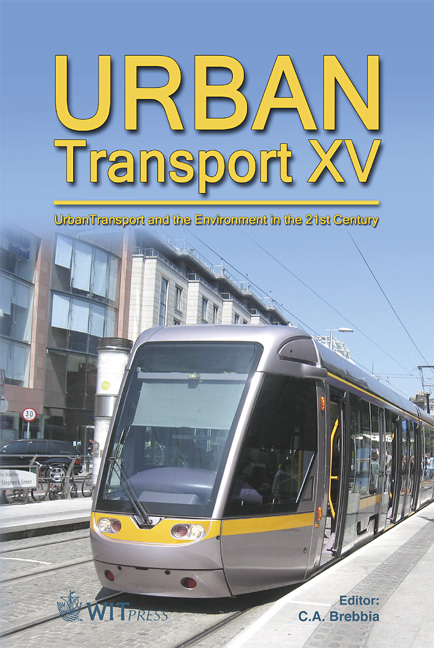About The High Capacity Public Transport Networks Territory Functions
Price
Free (open access)
Transaction
Volume
107
Pages
10
Page Range
41 - 50
Published
2009
Size
384 kb
Paper DOI
10.2495/UT090051
Copyright
WIT Press
Author(s)
Ş. Raicu, V. Dragu, M. Popa & Ş. Burciu
Abstract
A transit system’s infrastructure (tramways, underground or light rails) plays a major role in satisfying people’s need for mobility – by size and the stability of their operation, and also by the independence of their quality performance compared to cars facing traffic congestion, because of their dedicated operation. We analyzed the potential transport capacity of the transit network infrastructures in order to define their territory functions, through urban people and poles to determine daily urban mobility preferences (for work, study, business purposes) and occasional mobility (for sports, tourism, culture, health caring purposes). In a structured space (Bucharest city), using a GIS map and TranCAD software, we defined the cover/serve index for the 72 study areas. (quasi-homogenous areas regarding their social-economic activities). We determined a hierarchy of those areas which help to establish directions to adapt transit infrastructure topology to the fast growing rate of the urban development. The territory functions characterization of the transit networks is used also to determine the hierarchy of the most highly attractive centroids (using an index that takes also into account both people density of the different areas and the distance to the popular centroids). The results of the study emphasize the disparities in urban territory served by the transit transport infrastructure; they can represent a useful tool in transit networks development strategies. Keywords: transit networks, network topology, urban mobility, territory functions, accessibility, attractiveness.
Keywords
transit networks, network topology, urban mobility, territory functions, accessibility, attractiveness





